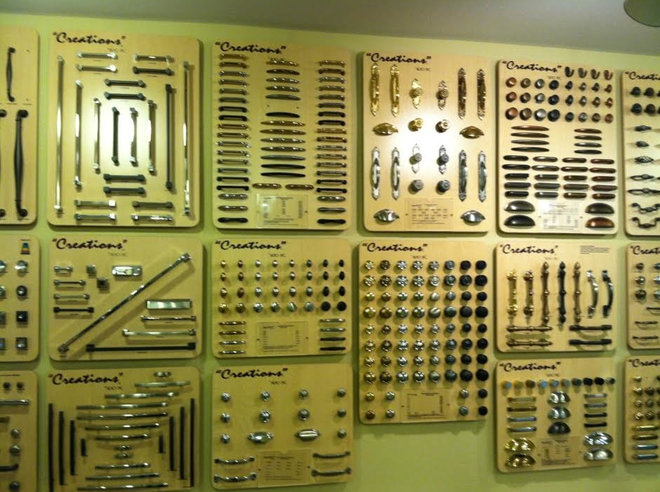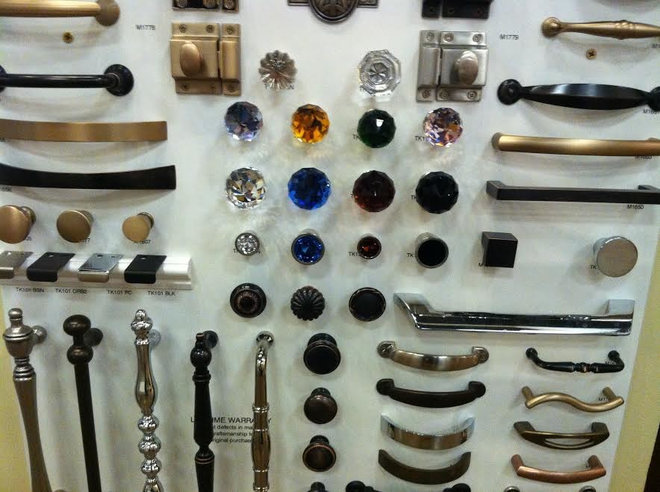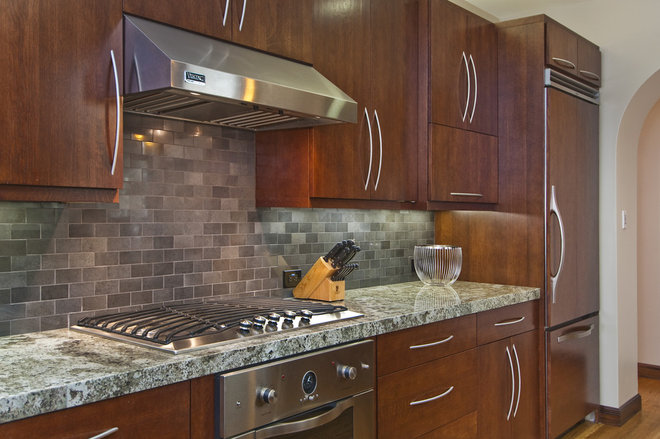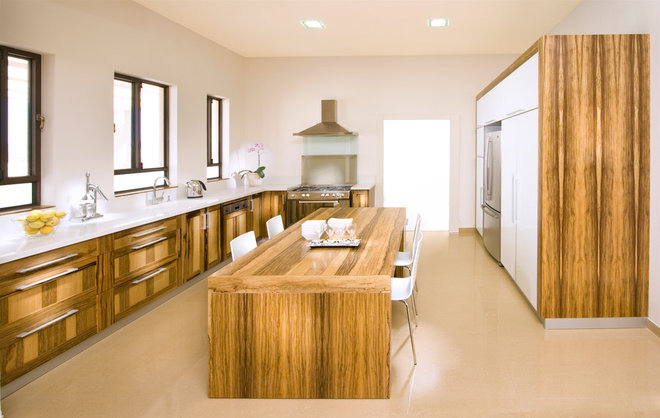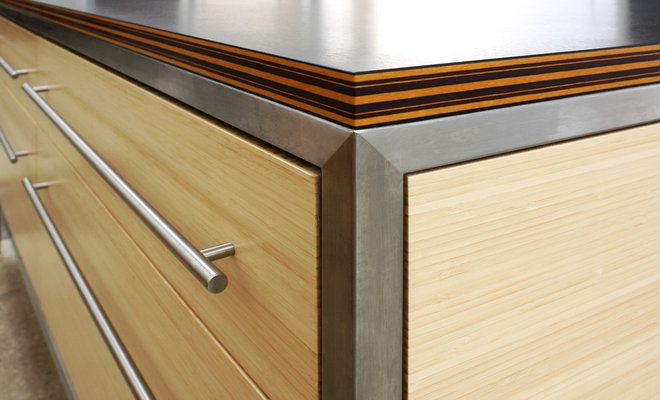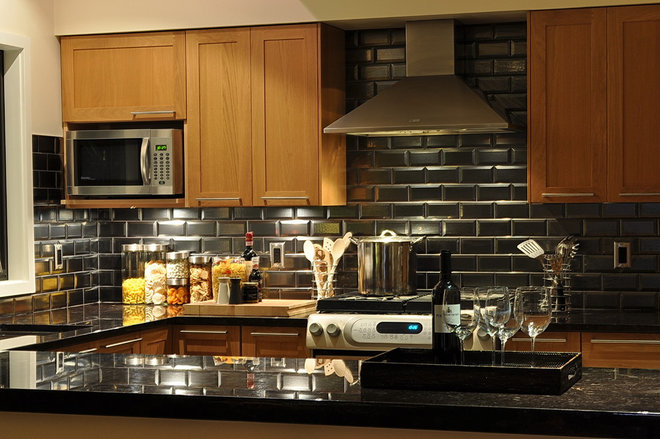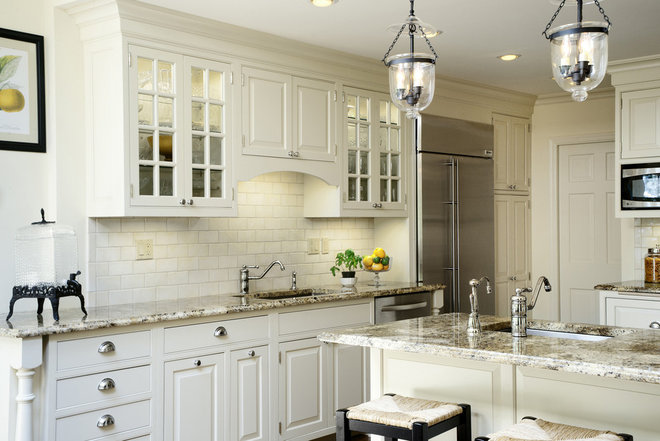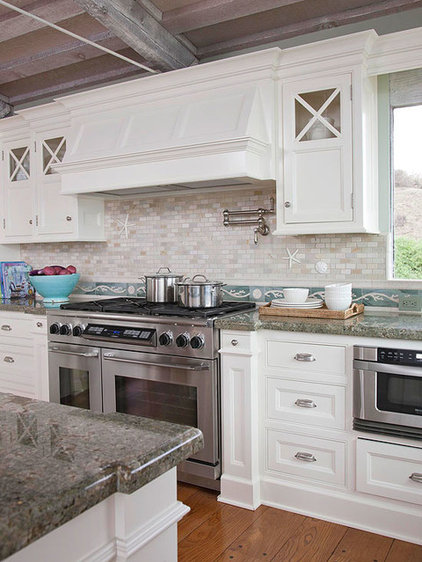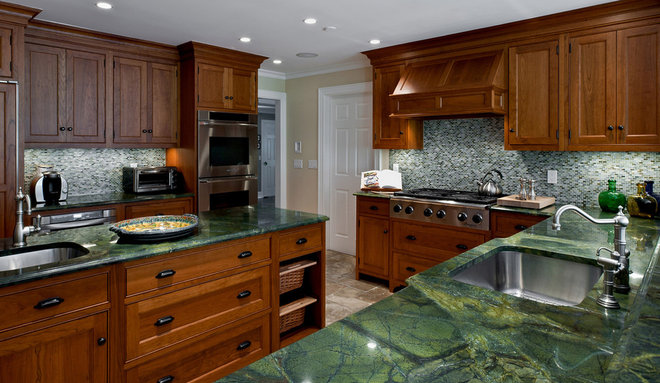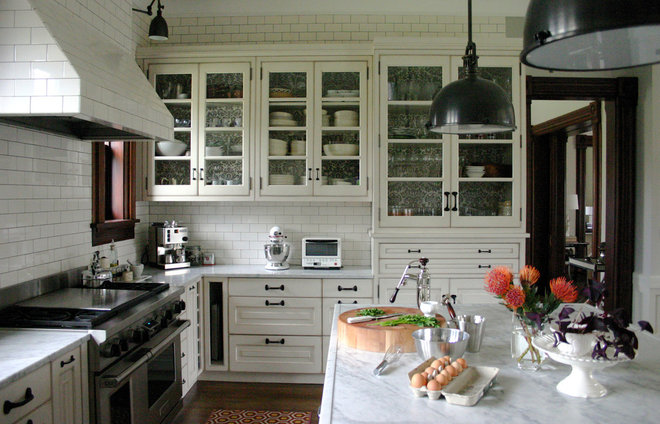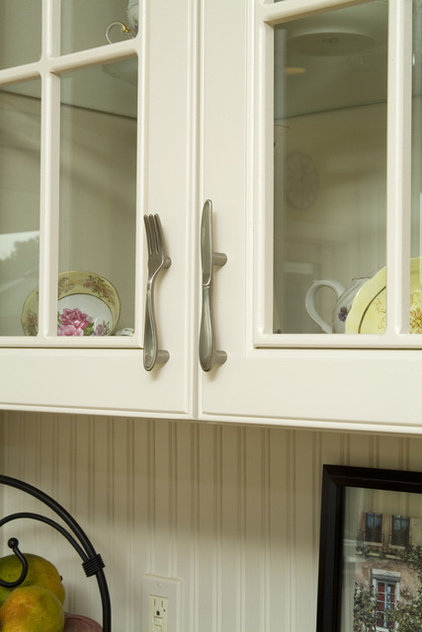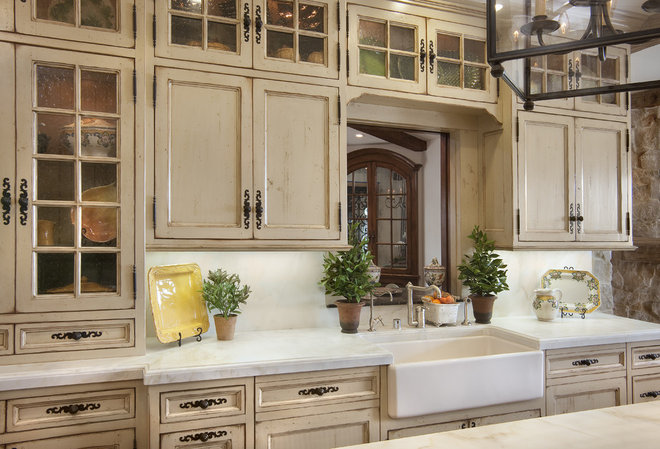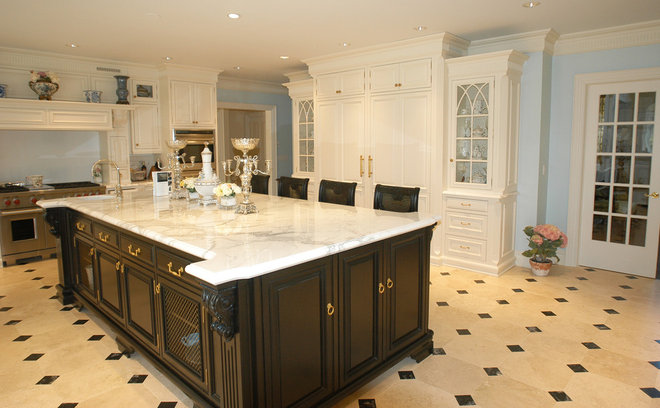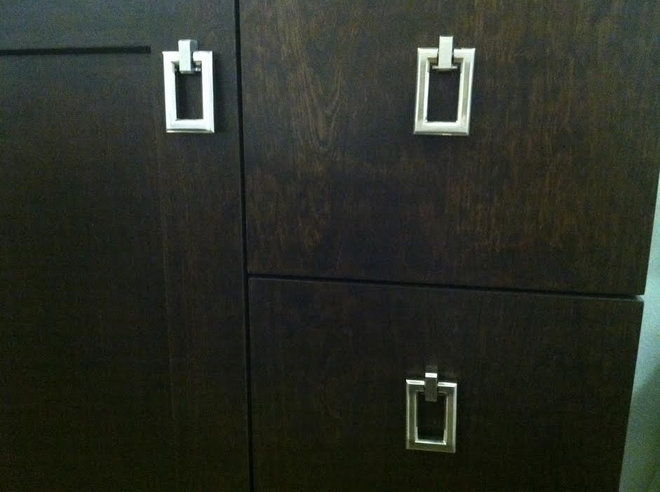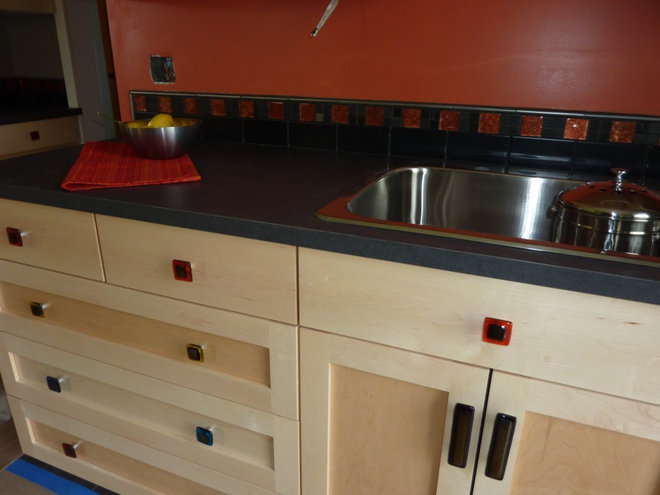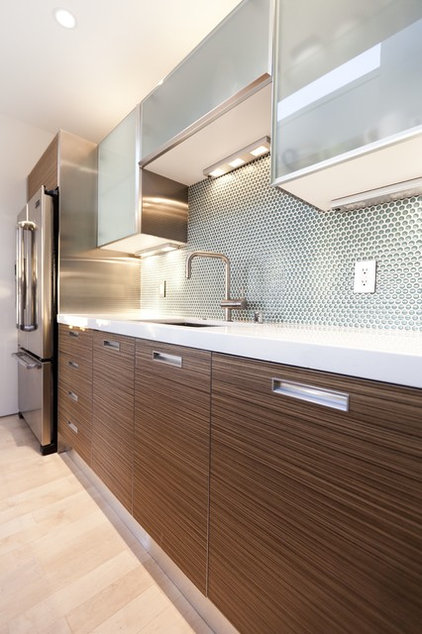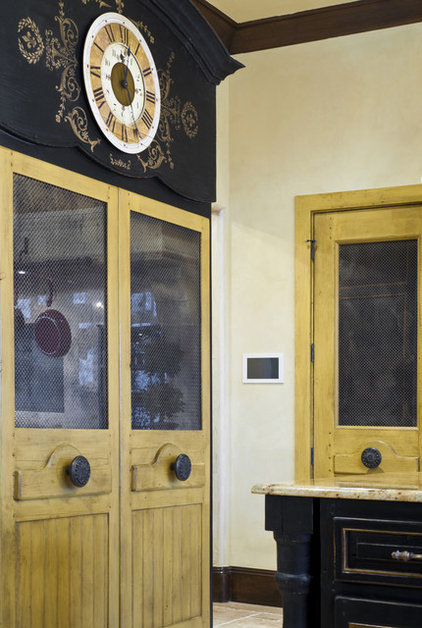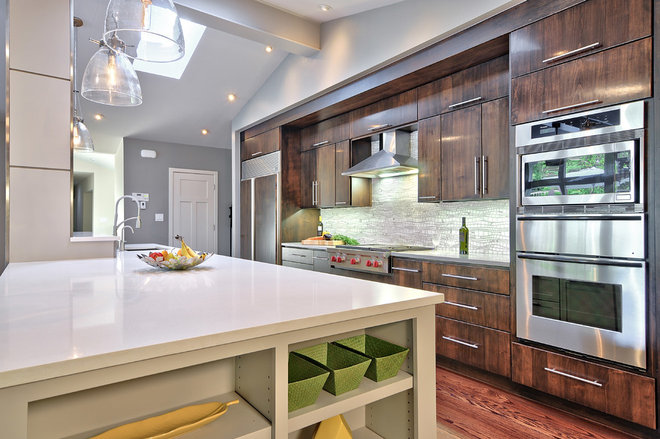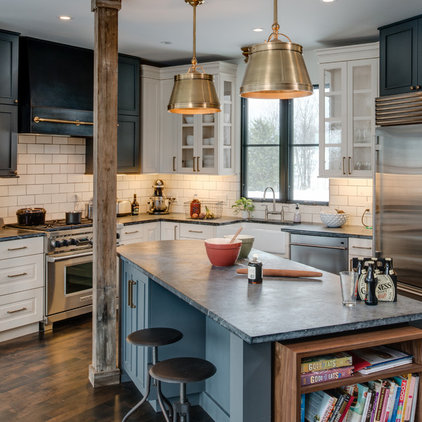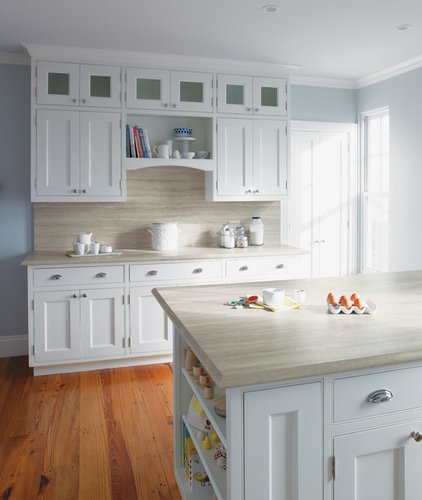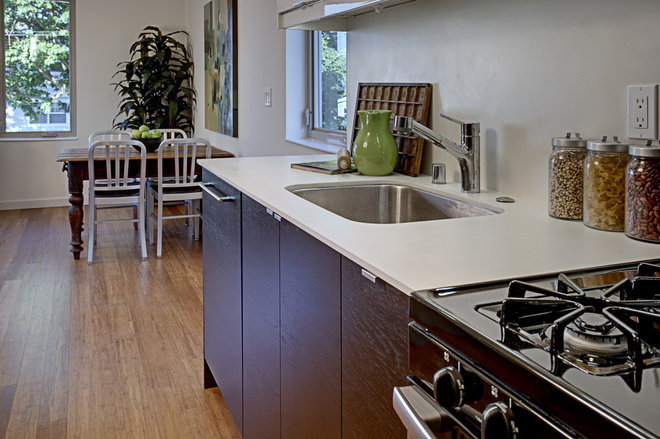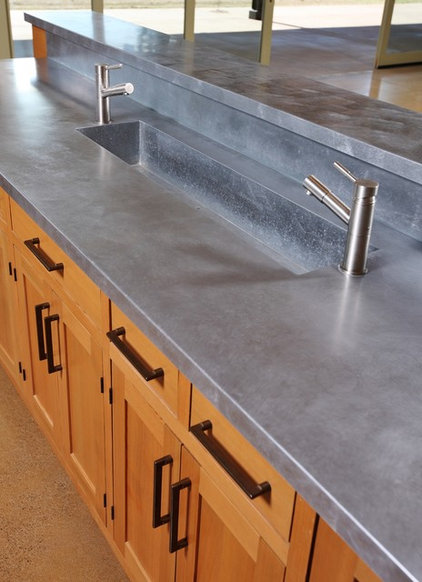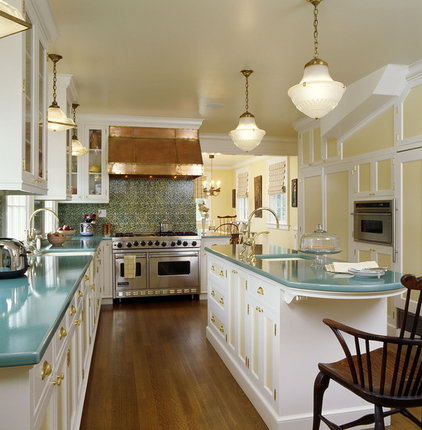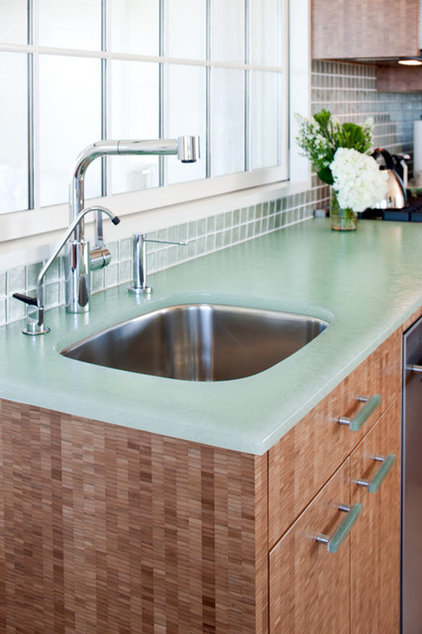Why
is it that some homes sit on the market for a year while others sell
like hot cakes? Frustrated sellers will blame a bad market, while a good
real estate professional will tell you that many times, a slow sale is
often attributed to the listing price.
If a home is overpriced, buyers will stay away. But, if the price is
competitive with similar homes in the area and “shows” better than the
competition, it will have a better chance of being sold quickly.
The secret is perfecting a technique that’s as American as apple pie: comparative shopping.
Although comparing houses with different styles, square-footages
and locations is challenging, real estate professionals still feel it’s
one of the best methods to use when determining a home’s market value.
A responsible real estate agent will effectively evaluate a
home’s worth through a process known as Comparative Market Analysis
(CMA). Taking a look at assets, such as a swimming pool, bigger than
normal living spaces, a fantastic view, adjacent city parks and other
attractions, the agent will begin to compare your home with similar
properties, called “comparables,” that have sold in the area within the
last six months. Typically, it is a realistic price range that will
ensure you top dollar and a reasonably quick sale.
However, factors such as the amount of time needed to sell your home can affect the agent's price recommendation dramatically.
I can determine the typical duration that listings are on the
market and can explain that the marketing “norms” vary with prices and
properties. Based on this criteria, we will be able to sell your house
for a price that both you and the buyer will be happy with. However, if
you’re under time constraints because of unexpected job changes or
moving agreements you’ve made on another property, this will narrow your
chances of selling the home for top dollar in the market.
Assuming you have sufficient time to market the home, here are a
few small steps you and your agent can take to finding the right price
for your property.
The best comparisons can be made with similar homes that have
been sold within the last 45 days as opposed to the standard six months.
Any longer, and other factors, such as the economy, could cloud your
view of how much your home is really worth.
Another good benchmark is to review the selling prices of homes
that have just been sold and are pending closes. Most MLS services
provide information on deals pending that most real estate agents should
be able to share with you.
A good rule of thumb before setting a price is to make 20
comparisons of comparable properties within a one-mile radius of your
house. Once completed you can feel comfortable that the price you’ve
picked is a good gauge of the home’s worth and won’t discourage
qualified buyers.
Being open and honest about what you see as the home’s greatest
strengths and biggest weaknesses will also help your agent get a better
feel for how to best evaluate (or assess) and market your home. Think of
your home as if you were the buyer. If your home is listed at the right
price, you’re well on your way to a speedy and fruitful sale.
Friday, June 27, 2014
Tuesday, June 24, 2014
Relocating Tips
Your boss has just given you the career opportunity of a lifetime, but the job is in another state.
Soon you discover that moving your family to another city may be one of life’s hardest tasks. The thought of leaving behind old friends and schools for a strange town can be frightening. The biggest challenge of all, however, is to preserve the equity in your housing investment so you will be able to purchase a similar home in the new location.
Not to worry. Even in these uncertain times homeowners can sell at very satisfactory prices in a reasonable period of time. The secret? Pay attention to details, utilize marketing savvy and price the home to sell quickly.
The following tips can help you get that “sold” sign up fast.
OFFER THE RIGHT PRICE. Start with a price that is reasonable for your neighborhood and the size of your home. Comparing the price of your home with similar nearby listings is an easy way to be sure you are offering the right price. Comparing the opinions of two independent appraisers will also help you avoid over-pricing.
PAY PART OF THE CLOSING COSTS…usually 3 to 5 percent of the loan amount. This will attract those first-time buyers who are short on cash for down-payment and closing costs. Offering to turn over personal property such as washing machines and dryers, refrigerators and flower boxes can also attract buyers looking for the best deal.
ACCEPT CONTINGENCY AGREEMENTS. Make your sale contingent upon the sale of the buyer’s home. This takes away buyers’ fears of juggling two properties and mortgages at the same time.
TAKE ADVANTAGE OF THE CORPORATE RELOCATION TRADE. Be sure that your broker is connected to a relocation network – one capable of bringing in buyers from distant places. And, of course, try to get your employer to provide you with relocation assistance, too.
MAKE YOUR HOME STAND OUT. Fresh paint and flowers can go a long way in impressing buyers. Tend to such details as moving the lawn, fixing stubborn doorknobs and sliding doors, and straightening up the basement. Remember, your home’s appearance on the day it’s shown can make or break a sale.
The bottom line is that sellers should take the time to make their home as attractive as possible. Compiling helpful tips for the buyer about school districts, utility bills and directions to the nearest shopping mall can go a long way in selling your house quickly.
With a little work and an active real estate agent, chances are good that your house will sell fast in today’s buyer’s market.
Soon you discover that moving your family to another city may be one of life’s hardest tasks. The thought of leaving behind old friends and schools for a strange town can be frightening. The biggest challenge of all, however, is to preserve the equity in your housing investment so you will be able to purchase a similar home in the new location.
Not to worry. Even in these uncertain times homeowners can sell at very satisfactory prices in a reasonable period of time. The secret? Pay attention to details, utilize marketing savvy and price the home to sell quickly.
The following tips can help you get that “sold” sign up fast.
OFFER THE RIGHT PRICE. Start with a price that is reasonable for your neighborhood and the size of your home. Comparing the price of your home with similar nearby listings is an easy way to be sure you are offering the right price. Comparing the opinions of two independent appraisers will also help you avoid over-pricing.
PAY PART OF THE CLOSING COSTS…usually 3 to 5 percent of the loan amount. This will attract those first-time buyers who are short on cash for down-payment and closing costs. Offering to turn over personal property such as washing machines and dryers, refrigerators and flower boxes can also attract buyers looking for the best deal.
ACCEPT CONTINGENCY AGREEMENTS. Make your sale contingent upon the sale of the buyer’s home. This takes away buyers’ fears of juggling two properties and mortgages at the same time.
TAKE ADVANTAGE OF THE CORPORATE RELOCATION TRADE. Be sure that your broker is connected to a relocation network – one capable of bringing in buyers from distant places. And, of course, try to get your employer to provide you with relocation assistance, too.
MAKE YOUR HOME STAND OUT. Fresh paint and flowers can go a long way in impressing buyers. Tend to such details as moving the lawn, fixing stubborn doorknobs and sliding doors, and straightening up the basement. Remember, your home’s appearance on the day it’s shown can make or break a sale.
The bottom line is that sellers should take the time to make their home as attractive as possible. Compiling helpful tips for the buyer about school districts, utility bills and directions to the nearest shopping mall can go a long way in selling your house quickly.
With a little work and an active real estate agent, chances are good that your house will sell fast in today’s buyer’s market.
Friday, June 20, 2014
Remodeling Your Home
The classic way for homeowners to increase the value of their house is
by remodeling existing rooms or adding on to its current plan.
Some choose to build recreation rooms and studies while others add new appliances, fixtures and cabinets to enliven rooms and make their home more attractive to future buyers.
But, when should you decide to stop sinking money into a home and buy a bigger place? And how much rehab is too much when it comes time to recovering remodeling costs through a home sale?
For instance, if you’ve just spent $1,000 remodeling your living room and didn’t expand your small bathroom, the chances of increasing the number of interested buyers are slim.
With these concerns in mind, I can offer a few tips for those struggling to add value to their home.
First, always protect the character of your home. Nothing sticks out more than a new addition that is in a completely different architectural style. Be consistent. Recognize your home’s character and stay within its framework.
The most financially rewarding areas to remodel are usually the kitchen and bath. Newly re-done cooking spaces and cabinets can attract more buyers and may command a slightly higher price for the home than a comparable one on the market. Simple repairs that are made to last will bring you the biggest returns upon sale.
Enlarged bathrooms are the most popular attraction for new homebuyers, according to the National Kitchen and Bath Association. Today, the most popular additions for younger buyers are sunken whirlpool baths and showers. But be sure to install modest, solid amenities. It’s easy to quickly over-spend on bathroom fixtures.
Buyers are, by convention, more interested in aboveground living space – not basements, yards and walkways. Swimming pools can be a poor investment if installed for the sole purpose of increasing a home’s value; it’s rare that a pool’s cost will be recovered in a home sale. It can also be a negative feature for potential buyers with very young children.
Replacing worn carpeting, tiles and wood floors can give your home an immediate advantage over similar properties in the area. Updating paint colors in all areas of your home can also prove beneficial.
However, it’s recommended that you use neutral colors, such as gray, beige and off-white when adding new floor and wall coverings. Fewer buyers will then turn away because of differing tastes.
Stay simple with your remodeling and look at your home as though you were the buyer. Chances are that if you find the upstairs bedroom could be brightened by a larger window, potential buyers will probably feel the same.
Don’t go overboard. Concentrate on improving two or three deficiencies in your home. More than likely, the time and money you spend adding quality to your home will be rewarded with greater profit at selling time.
Some choose to build recreation rooms and studies while others add new appliances, fixtures and cabinets to enliven rooms and make their home more attractive to future buyers.
But, when should you decide to stop sinking money into a home and buy a bigger place? And how much rehab is too much when it comes time to recovering remodeling costs through a home sale?
For instance, if you’ve just spent $1,000 remodeling your living room and didn’t expand your small bathroom, the chances of increasing the number of interested buyers are slim.
With these concerns in mind, I can offer a few tips for those struggling to add value to their home.
First, always protect the character of your home. Nothing sticks out more than a new addition that is in a completely different architectural style. Be consistent. Recognize your home’s character and stay within its framework.
The most financially rewarding areas to remodel are usually the kitchen and bath. Newly re-done cooking spaces and cabinets can attract more buyers and may command a slightly higher price for the home than a comparable one on the market. Simple repairs that are made to last will bring you the biggest returns upon sale.
Enlarged bathrooms are the most popular attraction for new homebuyers, according to the National Kitchen and Bath Association. Today, the most popular additions for younger buyers are sunken whirlpool baths and showers. But be sure to install modest, solid amenities. It’s easy to quickly over-spend on bathroom fixtures.
Buyers are, by convention, more interested in aboveground living space – not basements, yards and walkways. Swimming pools can be a poor investment if installed for the sole purpose of increasing a home’s value; it’s rare that a pool’s cost will be recovered in a home sale. It can also be a negative feature for potential buyers with very young children.
Replacing worn carpeting, tiles and wood floors can give your home an immediate advantage over similar properties in the area. Updating paint colors in all areas of your home can also prove beneficial.
However, it’s recommended that you use neutral colors, such as gray, beige and off-white when adding new floor and wall coverings. Fewer buyers will then turn away because of differing tastes.
Stay simple with your remodeling and look at your home as though you were the buyer. Chances are that if you find the upstairs bedroom could be brightened by a larger window, potential buyers will probably feel the same.
Don’t go overboard. Concentrate on improving two or three deficiencies in your home. More than likely, the time and money you spend adding quality to your home will be rewarded with greater profit at selling time.
Tuesday, June 17, 2014
Showing Checklist
Fully preparing your home for sale can make considerable difference in
the time it takes to sell it. You can help eliminate buyer objections
before they arise by making necessary repairs and improvements, some of
which are suggested below.
Outdoors__ Spruce up gardens and lawn; trim shrubbery and replace dead plants.
__ Yard and patio should be neat; outdoor furniture should be clean and in good shape.
__ Clean or paint your front door - remember first impressions last longest!
__ Manicure your front yard, driveway and entry - you can’t sell what you can’t see.
Exterior
__ Check that door numbers, mailbox, and exterior lighting are all in good repair.
__ Touch up with fresh paint as needed.
__ Inspect chimney for cracks or earthquake damage.
__ Repair loose trim, drainpipes and fencing.
__ Clean stains; clean window screens.
Garage
__ Remove clutter; tidy up shelves.
__ Wash floor so it looks clean and spacious.
Living Areas
__ Apply fresh paint as needed…brighten your interiors with neutral-toned paint.
__ Clean draperies and carpets.
__ Replace burned out light bulbs.
__ Clean fireplace, remove smoke stains from wall and mantle.
Kitchen
__ Sinks, appliances and counter tops should sparkle without any clutter.
__ Wax the floor.
__ Clean oven, range and other appliances.
__ Clean tile and grout; replace if necessary.
Bathrooms
__ Clean mirrors, glass, chrome and porcelain surfaces.
__ Replace shower curtain if necessary.
__ Fix any faucet drips or leaks.
__ Clean tile, grout and caulking; replace if necessary.
Closets
__ Doors and drawers should open and close easily.
__ Remove clutter; tidy up shelves and racks.
__ Shoes and clothes should be neatly arranged.
Overall
__ Check the basics around the house. It takes just a minute to check all doors, windows and cabinets to make sure they don’t stick, squeak or are too loose.
__ Clean your furnace & water heater, so buyers know they are looking at a house that has been well maintained.
Outdoors__ Spruce up gardens and lawn; trim shrubbery and replace dead plants.
__ Yard and patio should be neat; outdoor furniture should be clean and in good shape.
__ Clean or paint your front door - remember first impressions last longest!
__ Manicure your front yard, driveway and entry - you can’t sell what you can’t see.
Exterior
__ Check that door numbers, mailbox, and exterior lighting are all in good repair.
__ Touch up with fresh paint as needed.
__ Inspect chimney for cracks or earthquake damage.
__ Repair loose trim, drainpipes and fencing.
__ Clean stains; clean window screens.
Garage
__ Remove clutter; tidy up shelves.
__ Wash floor so it looks clean and spacious.
Living Areas
__ Apply fresh paint as needed…brighten your interiors with neutral-toned paint.
__ Clean draperies and carpets.
__ Replace burned out light bulbs.
__ Clean fireplace, remove smoke stains from wall and mantle.
Kitchen
__ Sinks, appliances and counter tops should sparkle without any clutter.
__ Wax the floor.
__ Clean oven, range and other appliances.
__ Clean tile and grout; replace if necessary.
Bathrooms
__ Clean mirrors, glass, chrome and porcelain surfaces.
__ Replace shower curtain if necessary.
__ Fix any faucet drips or leaks.
__ Clean tile, grout and caulking; replace if necessary.
Closets
__ Doors and drawers should open and close easily.
__ Remove clutter; tidy up shelves and racks.
__ Shoes and clothes should be neatly arranged.
Overall
__ Check the basics around the house. It takes just a minute to check all doors, windows and cabinets to make sure they don’t stick, squeak or are too loose.
__ Clean your furnace & water heater, so buyers know they are looking at a house that has been well maintained.
Friday, June 13, 2014
Home Improvements
What home improvements really pay off when the time comes to sell your house?
That’s an important question for any homeowner contemplating moving or remodeling. And the only possible answer is a somewhat complicated one.
That answer starts with the fact that really major improvements – room additions, total replacements of kitchens and baths, etc. - rarely pay off fully in the near term. It ends with the fact that small and relatively inexpensive changes can pay off in a big way in making your home attractive to buyers if your decision is to move now.
It’s often the case that the most appropriate major improvements are unlikely to return their full cost if a house is sold within two or three years.
Does that mean that major home improvements are always a bad idea? Absolutely not. It does mean, though, that if your present house falls seriously short of meeting your family’s needs you need to think twice – and think carefully – before deciding to undertake a major renovation. Viewed strictly in investment terms, major improvements rarely make as much sense as selling your present home and buying one that’s carefully selected to provide you with what you want.
Even if you have a special and strong attachment to the house you’re in and feel certain that you could be happy in it for a long time if only it had more bedrooms and baths, for example, there are a few basic rules that you ought to keep in mind.
Probably the most basic rule of all, in this regard, is the one that says you should never – unless you absolutely don’t care at all about eventual resale value – improve a house to the point where its desired sales price would be more than 20 percent higher than the most expensive of the other houses in the immediate neighborhood.
Try to raise the value of your house too high, that is, and surrounding properties will pull it down.
Here are some other rules worth remembering:
Never rearrange the interior of your house in a way that reduces the total number of bedrooms to less than three.
Never add a third bathroom to a two-bath house unless you don’t care about ever recouping your investment.
Swimming pools rarely return what you spend to install them. Ditto for sunrooms – and finished basements.
If you decide to do what’s usually the smart thing and move rather than improve, it’s often the smaller, relatively inexpensive improvements that turn out to be most worth doing.
The cost of replacing a discolored toilet bowl, making sure all the windows work or getting rid of dead trees and shrubs is trivial compared with adding a bathroom, but such things can have a big and very positive impact on prospective buyers. A good broker can help you decide which expenditures make sense and which don’t, and can save you a lot of money in the process.
That’s an important question for any homeowner contemplating moving or remodeling. And the only possible answer is a somewhat complicated one.
That answer starts with the fact that really major improvements – room additions, total replacements of kitchens and baths, etc. - rarely pay off fully in the near term. It ends with the fact that small and relatively inexpensive changes can pay off in a big way in making your home attractive to buyers if your decision is to move now.
It’s often the case that the most appropriate major improvements are unlikely to return their full cost if a house is sold within two or three years.
Does that mean that major home improvements are always a bad idea? Absolutely not. It does mean, though, that if your present house falls seriously short of meeting your family’s needs you need to think twice – and think carefully – before deciding to undertake a major renovation. Viewed strictly in investment terms, major improvements rarely make as much sense as selling your present home and buying one that’s carefully selected to provide you with what you want.
Even if you have a special and strong attachment to the house you’re in and feel certain that you could be happy in it for a long time if only it had more bedrooms and baths, for example, there are a few basic rules that you ought to keep in mind.
Probably the most basic rule of all, in this regard, is the one that says you should never – unless you absolutely don’t care at all about eventual resale value – improve a house to the point where its desired sales price would be more than 20 percent higher than the most expensive of the other houses in the immediate neighborhood.
Try to raise the value of your house too high, that is, and surrounding properties will pull it down.
Here are some other rules worth remembering:
Never rearrange the interior of your house in a way that reduces the total number of bedrooms to less than three.
Never add a third bathroom to a two-bath house unless you don’t care about ever recouping your investment.
Swimming pools rarely return what you spend to install them. Ditto for sunrooms – and finished basements.
If you decide to do what’s usually the smart thing and move rather than improve, it’s often the smaller, relatively inexpensive improvements that turn out to be most worth doing.
The cost of replacing a discolored toilet bowl, making sure all the windows work or getting rid of dead trees and shrubs is trivial compared with adding a bathroom, but such things can have a big and very positive impact on prospective buyers. A good broker can help you decide which expenditures make sense and which don’t, and can save you a lot of money in the process.
Thursday, June 12, 2014
Get a Grip on Kitchen Cabinets With the Right Knobs and Pulls
Joni Hilton
Oversized Pulls
What they are: Art objects as much as pulls, these knobs draw attention. Placed in the center, they draw your eye to the detailing of the worn wood here. Search salvage yards for antique ones and don’t be afraid to spring for the few knobs you’ll need. If you can’t find this sort of door detailing, you can create a similar effect by placing a medallion behind each knob in the center of your doors. Look for antitwist pins to keep the knob from spinning (in fact, do this with any round knob).
Pros: They put your personal stamp on your decor and add an element of surprise and panache.
Cons: This look can be overdone easily. The pulls can also be tricky for youngsters to use.
They’re good for you if: You have doors that can open easily with a center-mounted pull
Styles they work with: Eclectic, country, Mediterranean, Tuscan, contemporary, vintage
You might think that after making dozens of tough decisions during
your kitchen remodel, something like choosing handles for your cabinets
would be easy. Yeah, so not the case. You’ll soon find out that
there are more cabinet knob options than there are stars in the sky. But
don’t panic. And by all means, don’t make a knee-jerk decision just to
get it over with. When I used to make up design and swatch boards, I
would remind clients that the hardware matters as much as the big stuff.
Remember, you’ll be looking at and touching your kitchen cabinet knobs
every single day. So you want to make the right choice. And after all,
this is a micro design element that can have macro impact.
I photographed this showroom
display board to show you just a sliver of the vast array that’s out
there. But keep in mind that once you narrow down the kind of handle or knob you want, you can zero in on a few dozen choices instead of hundreds. Two common approaches to narrowing the field:
- If you’re making considerations based on resale, the top-selling finishes today are satin nickel, chrome and bronze.
- Base your selections on your kitchen faucet finish and style.
In my opinion, going to a
specialty showroom and paying the extra expense is worth it, because
you’ll find choices outside the mainstream and you can get expert help
there. These come from the selection at The Plumbery,
a kitchen and bath fixture store in Northern California. Here you can
see glass knobs, swirly knobs, modern knobs — all just a tad pricier
than conventional choices at a hardware store. But look at the
workmanship and style, even the heft. Though the average kitchen has 20
to 40 knobs, you might want to splurge for something unique.
While the material choices and detailing are endless, there are a few common styles that you’ll see come up again and again. Knowing which general kind you’re looking for will help you narrow your search. Here are a few key ones:
While the material choices and detailing are endless, there are a few common styles that you’ll see come up again and again. Knowing which general kind you’re looking for will help you narrow your search. Here are a few key ones:
Streamline Moderne
What it is: This is a form inspired by the high-speed rails and ships of the art deco era. You see it in the architecture and furnishings of that mid-1930s time period as well — think curved, slender, often horizontal lines.
These slim beauties are a natural for modern cabinetry and often come in stainless steel, making the style an excellent choice for dark stained wood. You see them in nautical-themed rooms as well.
And, as long as you’re adding or replacing cabinet handles, see if there’s a matching appliance handle for your fridge (as seen here) — many showrooms sell them.
Pros: Sleek, elegant, roomy
Cons: Large pulls cost more than small ones.
It’s good for you if: You want an easy grip, something shallow pulls don’t provide
Styles it works with: Modern, contemporary, art deco, transitional
What it is: This is a form inspired by the high-speed rails and ships of the art deco era. You see it in the architecture and furnishings of that mid-1930s time period as well — think curved, slender, often horizontal lines.
These slim beauties are a natural for modern cabinetry and often come in stainless steel, making the style an excellent choice for dark stained wood. You see them in nautical-themed rooms as well.
And, as long as you’re adding or replacing cabinet handles, see if there’s a matching appliance handle for your fridge (as seen here) — many showrooms sell them.
Pros: Sleek, elegant, roomy
Cons: Large pulls cost more than small ones.
It’s good for you if: You want an easy grip, something shallow pulls don’t provide
Styles it works with: Modern, contemporary, art deco, transitional
Bar Pulls
What they are: Sturdy yet glamorous pulls that complement many styles of cabinetry. Here linear flat bar pulls not only underscore the contemporary feel of the kitchen, but oversize pulls eliminate the need for two pulls on a wide drawer. A good rule of thumb is to use two knobs or pulls on drawers 18 inches wide or wider. But if you choose superwide pulls like these, one is enough.
There’s no hard and fast rule on how long bar pulls should be, so go with personal preference. However, most designers keep them at two-thirds to three-quarters the width of the drawer. Notice they’re even longer in this kitchen, yet the length works. A good idea is to purchase a few knobs and pulls, bring them home and try them out before replacing your entire kitchen’s hardware.
What they are: Sturdy yet glamorous pulls that complement many styles of cabinetry. Here linear flat bar pulls not only underscore the contemporary feel of the kitchen, but oversize pulls eliminate the need for two pulls on a wide drawer. A good rule of thumb is to use two knobs or pulls on drawers 18 inches wide or wider. But if you choose superwide pulls like these, one is enough.
There’s no hard and fast rule on how long bar pulls should be, so go with personal preference. However, most designers keep them at two-thirds to three-quarters the width of the drawer. Notice they’re even longer in this kitchen, yet the length works. A good idea is to purchase a few knobs and pulls, bring them home and try them out before replacing your entire kitchen’s hardware.
Here’s another example of one
long bar pull that is doing the job of two smaller ones. Bar pulls are a
great utilitarian choice for flat-panel cabinets.
Though most often stainless steel, they come in many other finishes, such as satin nickel (a bit darker than stainless), black and polished brass. Be aware that any shiny finish, such as chrome or brass, will show scratches more easily.
Something else to consider is that pulls are easier for the elderly to use than knobs. A pull that allows seniors to use their whole hand instead of just their fingertips, will be much appreciated.
Though most often stainless steel, they come in many other finishes, such as satin nickel (a bit darker than stainless), black and polished brass. Be aware that any shiny finish, such as chrome or brass, will show scratches more easily.
Something else to consider is that pulls are easier for the elderly to use than knobs. A pull that allows seniors to use their whole hand instead of just their fingertips, will be much appreciated.
Don’t think bar pulls are only for
modern kitchens. Here they give a jazzy, updated feel to Shaker-style,
five-piece recessed panel doors.
Pros: A secure grip and streamlined appearance
Cons: The larger formats mean they have a tendency to stand out more.
They’re good for you if: You like a pristine, unfussy look
Styles they work with: Modern, minimalist, contemporary, traditional, transitional, Shaker
Pros: A secure grip and streamlined appearance
Cons: The larger formats mean they have a tendency to stand out more.
They’re good for you if: You like a pristine, unfussy look
Styles they work with: Modern, minimalist, contemporary, traditional, transitional, Shaker
Bin Pulls (Cup Pulls)
What they are: An upside-down cup-shaped pull popularized in the mid-19th century. Bin or cup pulls are a popular choice for giving a kitchen a minimalist, vintage feel, just like on these Shaker-style cabinets and drawers. Shakers originally used wood pegs, usually made from maple, cherry or pine, in keeping with their preference for simplicity and austerity. But these cup-shaped drawer pulls are considered Shaker style today, and look clean and understated along with small knobs for the doors.
What they are: An upside-down cup-shaped pull popularized in the mid-19th century. Bin or cup pulls are a popular choice for giving a kitchen a minimalist, vintage feel, just like on these Shaker-style cabinets and drawers. Shakers originally used wood pegs, usually made from maple, cherry or pine, in keeping with their preference for simplicity and austerity. But these cup-shaped drawer pulls are considered Shaker style today, and look clean and understated along with small knobs for the doors.
Bin pulls and knobs come in a
variety of finishes; these are matte nickel. You can find them in most
stores that sell cabinet hardware, and they range in price from $8 to
$15 and up. As with any knob or pull, count how many you’ll need and
price them — along with hinges — before you make a decision.
Black was a great color choice
for the bin pulls used here on stained wood cabinetry. When choosing
knobs, hold them against various finishes to see which color looks best.
You may have seen a photo of a knob you love in polished brass, but
with a different cabinet door color than the ones you actually own. Bin
pulls come in almost infinite other finishes as well, including chrome,
oil-rubbed bronze, cast iron and brass.
Pros: Easy to use, easy to clean, easy to mix with a variety of cabinet styles
Cons: They tend to work best for mostly traditional styles.
They’re good for you if: Your drawers are heavy, because these are strong, workable pulls
Styles they work with: Shaker, traditional, vintage, country, eclectic
Pros: Easy to use, easy to clean, easy to mix with a variety of cabinet styles
Cons: They tend to work best for mostly traditional styles.
They’re good for you if: Your drawers are heavy, because these are strong, workable pulls
Styles they work with: Shaker, traditional, vintage, country, eclectic
Window Sash Pulls
What they are: Pulls based on window sash fittings, designed to lift heavy windows in the early 1900s during the transitional period.
Just look how smart black hardware looks against the white wood and subway tiles in this kitchen. These are window-sash-style pulls, the homey comfort food of cabinetry hardware. They take us back to an old-fashioned era when window fittings were smooth and simple, with softly rounded handles.
These industrial-feeling pulls are a blend of colonial and Arts and Crafts, and come in a wide variety of finishes. While these black ones are a good choice with the black appliances and lighting, don’t feel your knobs must match all the finishes in your kitchen; it’s OK to mix things up. Just don’t mix the knobs and hinges on the same door; those definitely should be coordinated so one doesn’t detract from the other.
Pros: Easy to grip, nostalgic
Cons: Works with only a handful of styles
They’re good for you if: You need a firm grip to open drawers and doors.
Styles they work with: Traditional, Arts and Crafts, colonial, country, vintage
What they are: Pulls based on window sash fittings, designed to lift heavy windows in the early 1900s during the transitional period.
Just look how smart black hardware looks against the white wood and subway tiles in this kitchen. These are window-sash-style pulls, the homey comfort food of cabinetry hardware. They take us back to an old-fashioned era when window fittings were smooth and simple, with softly rounded handles.
These industrial-feeling pulls are a blend of colonial and Arts and Crafts, and come in a wide variety of finishes. While these black ones are a good choice with the black appliances and lighting, don’t feel your knobs must match all the finishes in your kitchen; it’s OK to mix things up. Just don’t mix the knobs and hinges on the same door; those definitely should be coordinated so one doesn’t detract from the other.
Pros: Easy to grip, nostalgic
Cons: Works with only a handful of styles
They’re good for you if: You need a firm grip to open drawers and doors.
Styles they work with: Traditional, Arts and Crafts, colonial, country, vintage
Novelty Knobs
What they are: Artsy knobs with personality, and usually a theme.
I like this photo for several reasons. First, sometimes a novelty knob is the perfect touch to bring to an otherwise blah kitchen. The knife and fork here likely remind the homeowners not to take themselves too seriously.
This is also a great example of knob placement. Notice the knobs aren’t scrunched down in the bottom corner.
If you have a cabinet that stands alone, this is a good spot to show some personality and flair, or even splurge on one or two pricey knobs. It can be one of those small touches that really makes a room.
Pros: They can bring a dash of drama to an otherwise blah room.
Cons: These knobs aren’t always the easiest to grip and pull, because function isn’t always the first thing in mind. Also, it’s a look that can be overdone if too many are used in one space.
They’re good for you if: You enjoy expressing personality and taking chances in your decor
Styles they work with: Best on basic, plain cabinetry — modern, traditional, contemporary — so the knob gets the attention.
What they are: Artsy knobs with personality, and usually a theme.
I like this photo for several reasons. First, sometimes a novelty knob is the perfect touch to bring to an otherwise blah kitchen. The knife and fork here likely remind the homeowners not to take themselves too seriously.
This is also a great example of knob placement. Notice the knobs aren’t scrunched down in the bottom corner.
If you have a cabinet that stands alone, this is a good spot to show some personality and flair, or even splurge on one or two pricey knobs. It can be one of those small touches that really makes a room.
Pros: They can bring a dash of drama to an otherwise blah room.
Cons: These knobs aren’t always the easiest to grip and pull, because function isn’t always the first thing in mind. Also, it’s a look that can be overdone if too many are used in one space.
They’re good for you if: You enjoy expressing personality and taking chances in your decor
Styles they work with: Best on basic, plain cabinetry — modern, traditional, contemporary — so the knob gets the attention.
Back Plates
What they are: Knobs with a back piece that lies flat against the door.
The owners of this kitchen used dressy knobs with back plates that leave no doubt about the room’s Mediterranean style. Expect to pay a bit more for a knob with a back plate, as opposed to a knob alone.
Pros: The back plate protects your finish from fingernail scratches. It also gives a more substantial feel to the knob.
Cons: Often ornate, a back plate can be harder to clean around the details. Plus, back plates are an extra expense.
They’re good for you if: You want high impact that underscores the style you’ve chosen, such as a stylized European, Asian or Victorian theme.
Styles they work with: Mediterranean, Tuscan, Victorian, Asian, traditional, eclectic, vintage, Gothic, Edwardian
What they are: Knobs with a back piece that lies flat against the door.
The owners of this kitchen used dressy knobs with back plates that leave no doubt about the room’s Mediterranean style. Expect to pay a bit more for a knob with a back plate, as opposed to a knob alone.
Pros: The back plate protects your finish from fingernail scratches. It also gives a more substantial feel to the knob.
Cons: Often ornate, a back plate can be harder to clean around the details. Plus, back plates are an extra expense.
They’re good for you if: You want high impact that underscores the style you’ve chosen, such as a stylized European, Asian or Victorian theme.
Styles they work with: Mediterranean, Tuscan, Victorian, Asian, traditional, eclectic, vintage, Gothic, Edwardian
Drop Handles
What they are: Two-piece handles with a mounted portion and a dangling pull. Drop handles make built-ins look more like furniture.
What they are: Two-piece handles with a mounted portion and a dangling pull. Drop handles make built-ins look more like furniture.
While a dangling ring is the
most common style, drop handles work in other shapes and styles, too.
This rectangular choice is brilliant with these Craftsman-style
cabinets.
Another reason to choose drop handles is because they make it harder for little ones to open the cabinet, which is good for families with curious toddlers.
Another reason to choose drop handles is because they make it harder for little ones to open the cabinet, which is good for families with curious toddlers.
Here rectangular drop pulls give oomph to plain cabinets. They’re just unexpected enough to make a style statement.
Pros: They give a furniture feel to cabinetry and make cabinets tougher for toddlers to open.
Cons: Not as easy to open as standard pulls, and can be frustrating if you’re in a hurry. Also, depending on the handles, they can scratch the cabinets over time.
They’re good for you if: You’re trying to dress up plain-looking cabinets.
Styles they work with: Any style. Just use modern handles on modern cabinets, Victorian handles on Victorian cabinets and so on.
Pros: They give a furniture feel to cabinetry and make cabinets tougher for toddlers to open.
Cons: Not as easy to open as standard pulls, and can be frustrating if you’re in a hurry. Also, depending on the handles, they can scratch the cabinets over time.
They’re good for you if: You’re trying to dress up plain-looking cabinets.
Styles they work with: Any style. Just use modern handles on modern cabinets, Victorian handles on Victorian cabinets and so on.
Glass Knobs
What they are: Relatively inexpensive yet flashy knobs, usually fairly small. Octagonal and fluted glass knobs became an affordable luxury during the Depression era; here the look is updated with a square shape and a color that matches the persimmon backsplash.
Something to remember is that center-placed knobs appear to be below center when viewed from above, so place them just slightly above center on lower cabinets.
Pros: They can add a touch of sparkle or formality. Also, a knob is usually less expensive than a larger handle and quicker to install.
Cons: Richly carved or fluted ones can be difficult to clean.
They’re good for you if: You like classic simplicity with a bit of bling.
Styles they work with: Vintage, eclectic, contemporary, traditional, country
What they are: Relatively inexpensive yet flashy knobs, usually fairly small. Octagonal and fluted glass knobs became an affordable luxury during the Depression era; here the look is updated with a square shape and a color that matches the persimmon backsplash.
Something to remember is that center-placed knobs appear to be below center when viewed from above, so place them just slightly above center on lower cabinets.
Pros: They can add a touch of sparkle or formality. Also, a knob is usually less expensive than a larger handle and quicker to install.
Cons: Richly carved or fluted ones can be difficult to clean.
They’re good for you if: You like classic simplicity with a bit of bling.
Styles they work with: Vintage, eclectic, contemporary, traditional, country
Recessed Pulls
What they are: Streamlined pulls built into door facings. Slim indentations keep the visual plane uninterrupted in this contemporary kitchen. Obviously they have to be planned for before you choose your cabinets, but they’re a great choice in a galley kitchen with a lot of traffic — where clothes could snag on knobs that stick out.
Pros: Smooth lines, no catching on knobs as you breeze by
Cons: It takes a bit more work to reach in and pull than if you used a knob. Also, these can’t be switched to a different style later, if you decide to change your decor.
They’re good for you if: You’re replacing the doors entirely and can purchase this style at the outset.
Styles they work with: Minimalist, modern, contemporary
What they are: Streamlined pulls built into door facings. Slim indentations keep the visual plane uninterrupted in this contemporary kitchen. Obviously they have to be planned for before you choose your cabinets, but they’re a great choice in a galley kitchen with a lot of traffic — where clothes could snag on knobs that stick out.
Pros: Smooth lines, no catching on knobs as you breeze by
Cons: It takes a bit more work to reach in and pull than if you used a knob. Also, these can’t be switched to a different style later, if you decide to change your decor.
They’re good for you if: You’re replacing the doors entirely and can purchase this style at the outset.
Styles they work with: Minimalist, modern, contemporary
Cremone Bolts
What they are: Knob systems with vertical rods that slide to lock. This anything-but-ordinary cabinet gets its impact from European cremone bolts. Just be sure your hinges match, and be prepared to shell out more than $100 for each bolt.
Pros: Conversation pieces, style statements, even fun to use
Cons: Ka-ching
They’re good for you if: You want a look of architectural integrity, you like gadgets and you have a large budget for cabinet hardware. They also would be good for a single statement piece on a stand-alone cabinet.
Styles they work with: Vintage, antique, colonial, eclectic, country
What they are: Knob systems with vertical rods that slide to lock. This anything-but-ordinary cabinet gets its impact from European cremone bolts. Just be sure your hinges match, and be prepared to shell out more than $100 for each bolt.
Pros: Conversation pieces, style statements, even fun to use
Cons: Ka-ching
They’re good for you if: You want a look of architectural integrity, you like gadgets and you have a large budget for cabinet hardware. They also would be good for a single statement piece on a stand-alone cabinet.
Styles they work with: Vintage, antique, colonial, eclectic, country
What they are: Art objects as much as pulls, these knobs draw attention. Placed in the center, they draw your eye to the detailing of the worn wood here. Search salvage yards for antique ones and don’t be afraid to spring for the few knobs you’ll need. If you can’t find this sort of door detailing, you can create a similar effect by placing a medallion behind each knob in the center of your doors. Look for antitwist pins to keep the knob from spinning (in fact, do this with any round knob).
Pros: They put your personal stamp on your decor and add an element of surprise and panache.
Cons: This look can be overdone easily. The pulls can also be tricky for youngsters to use.
They’re good for you if: You have doors that can open easily with a center-mounted pull
Styles they work with: Eclectic, country, Mediterranean, Tuscan, contemporary, vintage
Wednesday, June 11, 2014
What's Your Style?
Styles
of houses vary across the country. From the New England Cape Cod to the
Victorians of San Francisco, the choices are almost endless.
Following is a quick guide to help you recognize and use the professional terms for many of the most prevalent house styles:
• Cape Cod: This compact story-and-a-half house is small and symmetrical with a central entrance and a steep, gable roof. Brick, wood or aluminum siding are the materials most commonly seen.
• Dutch Colonial: The Dutch Colonial has two or two-and-one-half stories covered by a gambrel roof (having two slopes on each side, with the lower slope steeper than the upper, flatter slope) and eaves that flare outward. This style is traditionally made of brick or shingles.
• Georgian: Popular in New England, the Georgian has a very formal appearance with two or three stories and classic lines. Usually built of red brick, the rectangular house has thin columns alongside the entry, and multi-paned windows above the door and throughout the house. Two large chimneys rise high above the roof at each end.
• New England Colonial: This two-and-one-half story early American style is box-like with a gable roof. The traditional material is narrow clapboard siding with a shingle roof. The small-pane, double-hung windows usually have working wood shutters.
• Pueblo / Santa Fe Style: Popular in the Southwest, these homes are either frame or adobe brick with a stucco exterior. The flat roof has protruding, rounded beams called vigas. One or two story, the homes feature covered/enclosed patios and an abundance of tile.
• Queen Anne / Victorian: Developed from styles originated in Great Britain, these homes are usually two-story frame with large rooms, high ceilings and porches along the front and sometimes sides of the house. Peaked roofs and ornamental wood trim, many times referred to as “gingerbread,” decorate these elaborate homes.
• Tudor: Modeled after the English country cottage, Tudor styling features trademark dark-wood timbering set against light-colored stucco that highlights the top half of the house and frames the numerous windows. The bottom half of the house is often made of brick.
These are just a few of the many styles of homes available across the country – some are more prominent in different areas than others.
Following is a quick guide to help you recognize and use the professional terms for many of the most prevalent house styles:
• Cape Cod: This compact story-and-a-half house is small and symmetrical with a central entrance and a steep, gable roof. Brick, wood or aluminum siding are the materials most commonly seen.
• Dutch Colonial: The Dutch Colonial has two or two-and-one-half stories covered by a gambrel roof (having two slopes on each side, with the lower slope steeper than the upper, flatter slope) and eaves that flare outward. This style is traditionally made of brick or shingles.
• Georgian: Popular in New England, the Georgian has a very formal appearance with two or three stories and classic lines. Usually built of red brick, the rectangular house has thin columns alongside the entry, and multi-paned windows above the door and throughout the house. Two large chimneys rise high above the roof at each end.
• New England Colonial: This two-and-one-half story early American style is box-like with a gable roof. The traditional material is narrow clapboard siding with a shingle roof. The small-pane, double-hung windows usually have working wood shutters.
• Pueblo / Santa Fe Style: Popular in the Southwest, these homes are either frame or adobe brick with a stucco exterior. The flat roof has protruding, rounded beams called vigas. One or two story, the homes feature covered/enclosed patios and an abundance of tile.
• Queen Anne / Victorian: Developed from styles originated in Great Britain, these homes are usually two-story frame with large rooms, high ceilings and porches along the front and sometimes sides of the house. Peaked roofs and ornamental wood trim, many times referred to as “gingerbread,” decorate these elaborate homes.
• Ranch: These long, low houses rank among the
most popular types in the country. The ranch, which developed from early
homes in the West and Southwest, is one-story with a low-pitched roof.
The raised ranch, which is also common is the U.S., has two levels, each
accessible from the home’s entry foyer, which features staircases to
both upper and lower levels.
• Southern Colonial: This large, two-to-three-story frame house is world famous for its large front columns and wide porches.
• Split-levels: Split-level houses have one living
level about half a floor above the other living level. When this type of
home is built on three different levels, it is called a tri-level. • Southern Colonial: This large, two-to-three-story frame house is world famous for its large front columns and wide porches.
• Tudor: Modeled after the English country cottage, Tudor styling features trademark dark-wood timbering set against light-colored stucco that highlights the top half of the house and frames the numerous windows. The bottom half of the house is often made of brick.
These are just a few of the many styles of homes available across the country – some are more prominent in different areas than others.
Facebook is buying 59 acres next to its budding 'West Campus' in Menlo Park
By Bonnie Eslinger
Daily News Staff Writer
Posted:
06/10/2014 05:58:38 AM PDT
Updated:
06/10/2014 06:01:58 AM PDT
Facebook,
which today has three times as many employees as when it moved to Menlo
Park in 2011, is poised to buy 59 acres next to the office building the
company is constructing kitty-corner from its main headquarters.
"The adjacent property we've agreed to purchase is an investment in our future. We have no immediate plans to develop the property," states a company statement that Grdina provided.
The "West Campus" that Facebook is building on 22 acres across from Bayfront Expressway will be able to handle up to 2,800 employees. Designed by famed architect Frank Gehry, the 435,000-square-foot office building will be crowned with a rooftop park and is expected to be completed by spring 2015.
Facebook's expansion into Menlo Park's eastern side also involves residential development. The company collaborated with developer St. Anton Partners to help design a 394-unit apartment complex that's about a mile away at 3665 Haven Ave. Another developer, Greystar, has applied to build a 146-unit apartment complex next door at 3645 Haven Ave. Those residential projects, plus a seven-building apartment complex with 195 units at 721-881 Hamilton Ave. in the adjacent Belle Haven neighborhood, are expected to be attractive living options for Facebook's young and growing workforce.
Email Bonnie Eslinger at beslinger @dailynewsgroup.com; follow her at twitter.com/bonnieeslinger.
Tuesday, June 10, 2014
What I Can Do For You
The often complex process required to sell your house can be confusing
and exhausting. It helps to know you are not alone and that you have, at
your disposal, your Agent's professional expertise. I will help you to
do the following:
- Educate you through the entire process
- Listen to your needs to understand your real estate objectives
- Help you understand all of the paperwork
- Handle any problems that arise during the transaction
- Properly prepare forms, contracts and disclosures, which are required by law, and make sure that they are legally correct
- Provide comparable sales data to assure that you are setting the proper price for your home
- Guide you regarding the repairs that should be made
- Show you homes in an effective and professional manner
- Guide you in your selection of escrow/closing and title people
- Oversee the closing process
- Help you spot buyers who are attempting to take advantage of you
- Help you understand the use and limitations of good faith deposits
- Advise you as to when you should seek the advice of an attorney
- Make sure the appraisal process is handled properly
- Help you to understand the complete escrow/closing and title process
- Advise you as to any inspections such as septic, well or soil, which might be applicable to your property
- Guide you as to how the escrow/closing instructions should be prepared
- Properly handle the walk-through process with you prior to the final closing
- See that any repairs or requirements are met prior to the closing
- Advise you as to what course of action should be taken if the buyer refuses to close the transaction
- Negotiate and deal effectively on your behalf with the buyers, other agents, escrow/closing, title people and attorneys
- See that each and every facet of the buying process is effectively and professionally handled in your best interest
Monday, June 9, 2014
7 Low-Maintenance Countertops for Your Dream Kitchen
Fingerprints, stains, resealing requirements ... who needs ’em? These countertop materials look great with little effort

Houzz Contributor
I’ll be honest: When my now-husband and I were talking about moving
in together, his kitchen pretty much sealed the deal. As it had
stainless steel appliances, gorgeous black granite countertop and a
layout that made workflow easy, I couldn’t understand why the man hadn’t
so much as boiled water since he moved in. To me that kitchen was just begging to be cooked in. So when the time came to prepare a meal in what was now our kitchen, I couldn’t have been more excited.
My joy quickly evaporated when I discovered that it took a good 15 minutes of sponging, buffing, polishing and buffing again to get that black countertop to shine. And even then, the shine lasted only until someone set a glass down.
So when we found a fixer-upper and decided to remodel, I was determined to find and install the easiest-cleaning, lowest-maintenance countertop. Granite was instantly out, not only because of my bad experience with a black granite countertop but because I didn’t want to have to reseal it annually, even though it’s a pretty easy process. And while I love the look and durability of marble, my family isn’t always diligent about wiping up stains, and I foresaw a splash of coffee or an errant squirt of lime juice marring its surface. I also considered concrete but quickly crossed it off my list due to its porousness and the risk of cracking — and once again, I didn’t want to have to seal or wax it.
In the end I rounded up several nearly maintenance-free surfaces to consider for my kitchen — including a couple I hadn’t heard of before.
Here are seven low-maintenance kitchen countertops to consider during your next remodel.
My joy quickly evaporated when I discovered that it took a good 15 minutes of sponging, buffing, polishing and buffing again to get that black countertop to shine. And even then, the shine lasted only until someone set a glass down.
So when we found a fixer-upper and decided to remodel, I was determined to find and install the easiest-cleaning, lowest-maintenance countertop. Granite was instantly out, not only because of my bad experience with a black granite countertop but because I didn’t want to have to reseal it annually, even though it’s a pretty easy process. And while I love the look and durability of marble, my family isn’t always diligent about wiping up stains, and I foresaw a splash of coffee or an errant squirt of lime juice marring its surface. I also considered concrete but quickly crossed it off my list due to its porousness and the risk of cracking — and once again, I didn’t want to have to seal or wax it.
In the end I rounded up several nearly maintenance-free surfaces to consider for my kitchen — including a couple I hadn’t heard of before.
Here are seven low-maintenance kitchen countertops to consider during your next remodel.
1. Engineered stone. Sold
under brand names including Ceasarstone and Silestone and often referred
to simply as quartz, this countertop material is made of crushed stone
bound together by a polymer resin. Engineered stone countertops are
nonporous and resistant to stains and scratches, and the only
maintenance they require is a wipe-down with mild soap and water.
2. Soapstone. Soapstone’s
durability has made this material a top choice for hundreds of years.
Its density makes it resistant to stains and bacteria, and it’s
unaffected by heat. To clean it, simply wipe it down with mild soap and
water.
On the flip side, soapstone develops a darker patina over time and can scratch or chip. While some people feel this gives their countertops character, others prefer to sand soapstone regularly to keep it looking like new.
Read more about soapstone countertops
On the flip side, soapstone develops a darker patina over time and can scratch or chip. While some people feel this gives their countertops character, others prefer to sand soapstone regularly to keep it looking like new.
Read more about soapstone countertops
3. Laminate. Yes, that’s a
laminate countertop. I did many double takes when I started looking at
them, too. The newest laminate countertops not only come in a wide
variety of gorgeous finishes, but they’re just as stainproof and easy to
clean as ever.
Explore more laminate options
Explore more laminate options
4. EcoTop. This bamboo and
paper composite with its trademarked name was completely new to me, but
the green material quickly won me over. It’s scratch- and stainproof,
it’s durable, and it won’t discolor over time. And cleaning couldn’t be
easier: Just wipe it with a soapy sponge and you’re good to go.
You will, however, have to maintain the sacrificial layer that makes this surface so durable. The manufacturer recommends buffing and resealing it every three months to three years, depending on wear and use.
You will, however, have to maintain the sacrificial layer that makes this surface so durable. The manufacturer recommends buffing and resealing it every three months to three years, depending on wear and use.
5. Zinc. While stainless
steel will leave you wiping up every fingerprint, zinc darkens over
time, developing a gorgeous patina. It is also nonporous and
bacteria-resistant and needs only a quick wipe-down to be cleaned.
Learn more about zinc countertops
Learn more about zinc countertops
6. Lava stone. Impervious to
heat, stains and cold and virtually maintenance free, lava stone might
be the Holy Grail of countertops. But as prices start at $225 a foot and
there’s a waiting list to boot, there’s a reason why you don’t see this
material more often.
“These counters are very easy to clean. I use a light Scotch-Brite sponge and soapy water, or Method all-purpose cleaner and a sponge or paper towel,” says the homeowner. “Nothing — including oil, coffee, juice, etc. — has stained these counters.”
Sunday, June 8, 2014
San Mateo County Fair
Where Tradition Meets Innovation....
Starts on June 7th to June 15th
1346 Saratoga Dr, San Mateo
(650) 574-3247
(800) 338-EXPO
https://sanmateocountyfair.com/
Sunday, June 8 - 11:00am – 10:00pm*
Monday, June 9 - 12:00pm – 10:00pm*
Tuesday, June 10 - 11:00am – 10:00pm*
Wednesday, June 11 - 12:00pm – 10:00pm*
Thursday, June 12 - 12:00pm – 10:00pm*
Friday, June 13 - 12:00pm – 10:00pm*
Saturday, June 14 - 11:00am-10:00pm*
Sunday, June 15 - 11:00am –10:00pm*
Starts on June 7th to June 15th
1346 Saratoga Dr, San Mateo
(650) 574-3247
(800) 338-EXPO
https://sanmateocountyfair.com/
2014 Admission
2014 Fair Carnival Wristband
Buy Wristbands »
POP A Pay One Price wristband good for any 1 day of carnival rides during the 2014 San Mateo County Fair. Redeem wristband from Carnival ticket booth/redemption table.
San Mateo Country Fair 2014
Buy Tickets »
These tickets do not include the carnival or Gold Circle tickets.
DAILY ADMISSION Pre-Sale During Fair
Daily Adult $8.00 $10.00
Daily Junior: 6 – 12 $6.00 $8.00
Daily Senior: 62 & Over $6.00 $8.00
5 & Under Free
Seasonal Pass (Run of Fair)
Adult $20.00 $25.00
Junior: 6-12 $18.00 $20.00
Senior: 62 & Over $18.00 $20.00
Carnival (Pre-Sale Ends 6/6/14) $21.00 $30.00
Parking $10.00
1346 Saratoga Dr, San Mateo
Pre-Sale Specials Exp 6/1/14
Fun for the children, Easy on the wallet
Please check the Special Promotions page for daily admission discounts
Prices Subject to Change
Buy Wristbands »
POP A Pay One Price wristband good for any 1 day of carnival rides during the 2014 San Mateo County Fair. Redeem wristband from Carnival ticket booth/redemption table.
San Mateo Country Fair 2014
Buy Tickets »
These tickets do not include the carnival or Gold Circle tickets.
2014 Pricing
DAILY ADMISSION Pre-Sale During Fair
Daily Adult $8.00 $10.00
Daily Junior: 6 – 12 $6.00 $8.00
Daily Senior: 62 & Over $6.00 $8.00
5 & Under Free
Seasonal Pass (Run of Fair)
Adult $20.00 $25.00
Junior: 6-12 $18.00 $20.00
Senior: 62 & Over $18.00 $20.00
Carnival (Pre-Sale Ends 6/6/14) $21.00 $30.00
Parking $10.00
1346 Saratoga Dr, San Mateo
Pre-Sale Specials Exp 6/1/14
Fun for the children, Easy on the wallet
Please check the Special Promotions page for daily admission discounts
Prices Subject to Change
2014 Fair Hours
Saturday, June 7 - 11:00am – 10:00pm*Sunday, June 8 - 11:00am – 10:00pm*
Monday, June 9 - 12:00pm – 10:00pm*
Tuesday, June 10 - 11:00am – 10:00pm*
Wednesday, June 11 - 12:00pm – 10:00pm*
Thursday, June 12 - 12:00pm – 10:00pm*
Friday, June 13 - 12:00pm – 10:00pm*
Saturday, June 14 - 11:00am-10:00pm*
Sunday, June 15 - 11:00am –10:00pm*
Friday, June 6, 2014
San Carlos district eyes old Black Mountain Spring Water land as possible school site
By Bonnie Eslinger
Daily News Staff Writer
Posted:
06/06/2014 03:00:00 AM PDT
A
city-owned parcel off Crestview Drive isn't the only site the San Carlos
School District has set its eyes on for a potential new campus.
The Black Mountain land was inadvertently listed on the agendas for a joint meeting of the San Carlos City Council and San Carlos School Board, which had been scheduled to discuss a possible property sale or swap that would allow the district to move the Charter Learning Center to the four-acre Crestview Drive site.
In their first order of business, however, the council and school board voted to remove the Black Mountain site from their respective agendas because they had neglected to notify the public that district-owned land behind Tierra Linda Middle School might come up in property transaction discussions. City Attorney Greg Rubens and County Counsel John Beiers had advised them that Tierra Linda couldn't be added to the agendas at the last minute so the scheduled negotiations would have to be postponed until 8 a.m. Tuesday.
After the meeting, schools Superintendent Craig Baker acknowledged to The Daily News that the district is looking at the Black Mountain site, although the Crestview parcel is its preferred option.
The Black Mountain land had recently gone back on the market after a deal with a potential buyer fell through, Baker said.
John McLellan, a senior associate with Colliers International's office in Redwood City, confirmed that the real estate agency is handling the sale of the Black Mountain Spring Water properties -- four parcels at 800, 804, 806 and 808 Alameda de las Pulgas that make up a total of about 11.46 acres.
"The signs just went up today," McLellan said during a phone interview Thursday.
A price hasn't been set for the property, which is between Madera Avenue and Melendy Drive. "We're going out to the market on the price," McLellan said. "If you're interested, bring us an offer and the highest price wins."
Although the land is steep in some areas, it does have several level spots including a "really nice pad against the Alameda" and another flat area about halfway up the hill, McLellan said.
The school district wants to move the Charter Learning Center off the Tierra Linda campus so it can build a new school in its place for fourth- and fifth-graders to alleviate crowding at its elementary schools. Last month, Baker approached the city with a proposal for a straight no-cash swap -- the Crestview site for the land behind Tierra Linda. A majority of council members rejected the offer, though, saying the city-owned land is more valuable.
The city countered by offering to sell the district its Crestview lot for $12.4 million, which could be paid off interest-free over 35 years with annual payments of $354,286. But Baker told city officials the district couldn't afford that and suggested a new round of negotiations. The district has also considered relocating the Charter Learning Center to the Arundel or Heather elementary school campuses.
Should it decide to swap or sell the Crestview lot, San Carlos would have to ask voters to remove it from parkland status. Last week, the council scheduled a "protest hearing" on June 30, a first step required by state law in case the city later decides to put the question on the November ballot.
Email Bonnie Eslinger at beslinger@dailynewsgroup.com; follow her at twitter.com/bonnieeslinger.
Thursday, June 5, 2014
Are you ready to find a property?
Are you ready to get started?!
Once you've determined that you are ready
to purchase a home, there are few things as exciting as searching for
just the right property to call your own.
Remember, shopping for a home is a process that, whenever possible, should not be rushed. Make sure that you perform adequate research on the area, neighborhoods and the homes available on the market before you buy. You should do your best to look carefully and, whenever possible, try not to let your emotions make your final decision.
We will help to provide you with additional information on areas that are attractive to you, as well as schedule times for you to preview any properties that may be of interest.
- THE CLARKE TEAM
http://clarketeam.com
Wednesday, June 4, 2014
Wine Tasting This Saturday June 7th 2014
Saturday,
June 7th: Please
join us for a Pinotage Vertical on June 7th from 12:00-5:00pm. Taste our 2007,
2009 & 2012 Pinotage side-by-side, and experience how unique each vintage
is. The 2012 vintage is a Futures - Barrel Sample. Buy a case now & save
40%! Regularly: $360, Your Price: $216
*Ready for pick-up in December.
Admission: Free for Club Members, $10 for General Public.
Saturday, June 7th: Two events, two locations, 1 day, 1 winery. Make it a wine day! Stop by the winery for the Pinotage Vertical, and then make your way over to the College of San Mateo for Jazz on the Hill from 11am-6pm! Domenico Winery will be the exclusive winery at the event, so come on over, grab a glass of wine & listen to LIVE Jazz while enjoying some beautiful weather.
Domenico Winery
1697 Industrial Road, San Carlos, CA 94070
www.domenicowinery.com
Questions? Call us! 650-593-2335
*Ready for pick-up in December.
Admission: Free for Club Members, $10 for General Public.
Saturday, June 7th: Two events, two locations, 1 day, 1 winery. Make it a wine day! Stop by the winery for the Pinotage Vertical, and then make your way over to the College of San Mateo for Jazz on the Hill from 11am-6pm! Domenico Winery will be the exclusive winery at the event, so come on over, grab a glass of wine & listen to LIVE Jazz while enjoying some beautiful weather.
Domenico Winery
1697 Industrial Road, San Carlos, CA 94070
www.domenicowinery.com
Questions? Call us! 650-593-2335
Monday, June 2, 2014
Want to see how the market in San Carlos is doing?
Find a market analysis report here: http://www.sancarloshomefinder.com/mimarket/zip/94070/
Subscribe to:
Posts (Atom)
